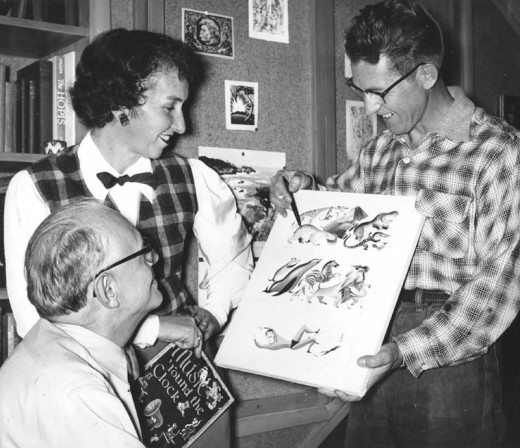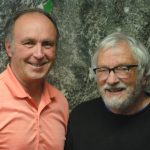
2016 marks the 70th anniversary of the most extraordinary year in Idyllwild’s history. 1946 saw the birth of such landmark institutions as the Town Crier, Idyllwild Mountain Inn, Town Hall, Sportland recreation center, Foster Lake, Desert Sun School, Fern Valley Corners, Community Presbyterian Church, Hidden Lodge ski resort and Idyllwild’s own telephone exchange.
I’ve written in the past about some of the people and families — Maxwells, Johnsons, Elliotts — who brought these entities into being. Now it’s time to remember the couple responsible for the one 1946 development that would prove most consequential for our village’s current identity: the Idyllwild Arts Foundation.
Max Krone and Beatrice Perham, known to all here on the Hill simply as Max and Bee, had become accomplished musicians and choral music teachers by the time they married in their late 30s.
Trained at Northwestern and the University of Illinois, Max was an author, composer, arranger or editor of myriad choral works, and a published authority on choral conducting. He had taught in and administered choral music programs at the above schools and Western Reserve University in Ohio.
Bee was widely known for her children’s music books and workshops for music teachers. They shared a particular interest in folk music from around the world.
In 1939, they moved to Los Angeles, where the University of Southern California hired both Max as a professor and assistant choral director, and Bee as a lecturer. They settled in a picturesque Hollywood home near the slopes of Griffith Park.
On Labor Day weekend 1941, the Krones came to Idyllwild for a visit at the North Circle home of their friends, USC law school dean Robert Kingsley and his wife. Like so many of us here on the Hill, the Krones were instantly captivated by the Hill. Even before returning to Los Angeles they succumbed to an impulse purchase of the Lincoln Ferris summer home on Marion View Drive.
World War II soon descended with particular intensity on Southern California. The next four years intensified the Krones’ deep-seated belief in music and the other arts as universal languages capable of uniting the fragmented peoples of a war-torn world.
Their Idyllwild stays reinforced a prescient sense that a forest setting can have a calming effect on mind, body and soul. Amid growing societal pressures to live life faster, time spent here could carry over to the rest of a person’s life.
With the war’s end and Max’s appointment as dean of USC’s Institute of the Arts, the Krones set about looking for suitable land. The national Music Camp at Interlochen, Michigan was their working model.
A tip from Forest Service rangers led them to a wooded, 340-acre parcel surrounded on three sides by public land for sale on Domenigoni Flat at the lower end of Strawberry Valley. Closing the deal, they set about frantically raising money to supplement their personal resources.
Bee recalled “writing music textbooks like crazy” for more royalty income. Dean Kingsley helped Max set up the Idyllwild Arts Foundation and recruit USC faculty members to invest by buying cabin lots on 100 acres set aside across Strawberry Creek from the planned campus. Seventy-five percent of the sales income went toward the land purchase and the other quarter went into a start-up fund for the planned school.
For the next four years, the two Krones mined their extensive contacts nationally and in the Los Angeles arts community, as well as locally in Idyllwild, to raise money, recruit faculty and influential board members, and generate publicity.
When its first summer session opened in 1950, the Idyllwild School of Music and the Arts, better known as ISOMATA, was on its way to becoming the magnet for the vibrant arts community that characterizes Idyllwild today.
Bob Smith is a researcher and archivist with the Idyllwild Area Historical Society. He welcomes comments, questions, corrections and suggested topics for this column at [email protected].











Thanks for publishing this! I’m wondering if you have any information in your research into the history of ISOMATA about Genieve and Sidney Fox, a musician couple who were instrumental in the early years in promoting the campus and bringing important cultural figures there. They were my grandparents, and I eventually attended ISOMATA as a child in the late ’70s and early ’80s.